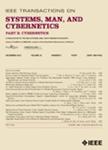版权所有:内蒙古大学图书馆 技术提供:维普资讯• 智图
内蒙古自治区呼和浩特市赛罕区大学西街235号 邮编: 010021

作者机构:Laboratory for Machine Learning and Knowledge Representation Division of Electronics Ruder Bošković Institute Zagreb10000 Croatia
出 版 物:《IEEE Transactions on Cybernetics》 (IEEE Trans. Cybern.)
年 卷 期:2020年第50卷第4期
页 面:1711-1725页
核心收录:
学科分类:1205[管理学-图书情报与档案管理] 0808[工学-电气工程] 08[工学]
基 金:Manuscript received May 18, 2018 revised August 13, 2018 and November 14, 2018 accepted November 23, 2018. Date of publication December 11, 2018 date of current version February 25, 2020. This work was supported in part by the Croatian Science Foundation (Structured Decompositions of Empirical Data for Computationally-Assisted Diagnoses of Disease) under Grant IP-2016-06-5235, and in part by the European Regional Development Fund (DATACROSS) under Grant KK.01.1.1.01.0009. This paper was recommended by Associate Editor S. Ventura. (Corresponding author: Ivica Kopriva.) The authors are with the Laboratory for Machine Learning and Knowledge Representation, Division of Electronics, Rud¯er Bošković Institute, 10000 Zagreb, Croatia (e-mail: maria.brbic@irb.hr ivica.kopriva@irb.hr)
主 题:Clustering algorithms
摘 要:In many applications, high-dimensional data points can be well represented by low-dimensional subspaces. To identify the subspaces, it is important to capture a global and local structure of the data which is achieved by imposing low-rank and sparseness constraints on the data representation matrix. In low-rank sparse subspace clustering (LRSSC), nuclear and 1-norms are used to measure rank and sparsity. However, the use of nuclear and 1-norms leads to an overpenalized problem and only approximates the original problem. In this paper, we propose two 0 quasi-norm-based regularizations. First, this paper presents regularization based on multivariate generalization of minimax-concave penalty (GMC-LRSSC), which contains the global minimizers of a 0 quasi-norm regularized objective. Afterward, we introduce the Schatten-0 (S0) and 0-regularized objective and approximate the proximal map of the joint solution using a proximal average method (S00-LRSSC). The resulting nonconvex optimization problems are solved using an alternating direction method of multipliers with established convergence conditions of both algorithms. Results obtained on synthetic and four real-world datasets show the effectiveness of GMC-LRSSC and S00 -LRSSC when compared to state-of-the-art methods. © 2013 IEEE.